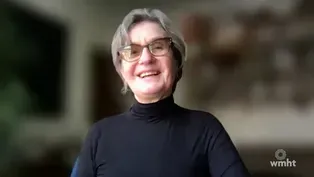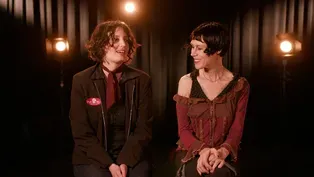TvFilm
Cameron S. Mitchell on Accessible Film Sets
Clip: Season 15 Episode 1 | 1m 59sVideo has Closed Captions
Learn how accessibility was integrated into the production design of "ELSA."
Cameron S. Mitchell describes how they thoughtfully incorporated accessibility into the production design of his short “ELSA.”
Problems with Closed Captions? Closed Captioning Feedback
Problems with Closed Captions? Closed Captioning Feedback
TvFilm is a local public television program presented by WMHT
TVFilm is made possible by the New York State Council on the Arts with the support of the Office of the Governor and the New York State Legislature.
TvFilm
Cameron S. Mitchell on Accessible Film Sets
Clip: Season 15 Episode 1 | 1m 59sVideo has Closed Captions
Cameron S. Mitchell describes how they thoughtfully incorporated accessibility into the production design of his short “ELSA.”
Problems with Closed Captions? Closed Captioning Feedback
How to Watch TvFilm
TvFilm is available to stream on pbs.org and the free PBS App, available on iPhone, Apple TV, Android TV, Android smartphones, Amazon Fire TV, Amazon Fire Tablet, Roku, Samsung Smart TV, and Vizio.
Providing Support for PBS.org
Learn Moreabout PBS online sponsorship(soft lively music) - Production needs and disability needs are actually very similar and disability rights are human rights, so access needs are film needs, it all ties in.
So that's something that I hope to continue to spread by leading accessible, disability-friendly productions and spreading the good word to other filmmakers to also consider this and do it 'cause it's not that hard.
All it takes is a couple extra seconds of thought.
Even if someone who's disabled isn't in the room, just maybe thinking about the blind person who isn't there or the deaf person who isn't there.
It's kind of like a if you build it, they will come type scenario where you have to anticipate the needs.
They're not gonna go out and vocalize themselves.
It's really an onus on the individual who's making films and programming films to think about these things.
We were always ready to roll working and accommodating Elsa.
And you know, even down to the lighting design actually.
She had told me in the pre-interview that her eyes kind of work like a broken camera aperture.
Her words.
Where if she walks into a room that's too dark, her eyes will like shut down and it can take a long time to readjust.
So when we filmed her fencing scenes, 'cause she fences, we actually uplit all of the walls in like a red and blue stylistic, but still, you know, not like a super down lit, low key kind of studio setup.
And she was able to walk onto that set and, you know, perform her fencing.
I think that's probably the thing I'm most proud of of the production of the project is how much it thoughtfully incorporated accessibility into the production design throughout from beginning to end.
Cameron S. Mitchell on Creating Access Using Captions & ASL
Video has Closed Captions
Discover the magic of accessible films with captions, ASL, and audio descriptions. (2m 14s)
Dorothea Braemer on Using Your Voice in Filmmaking
Video has Closed Captions
Dorothea Braemer believes the filmmaker's mission: connect with others & express yourself. (1m 44s)
ELSA | Lost in Time | It's Possible: Preview
Video has Closed Captions
Join our host Jermaine Wells to watch three short films on TVFilm. (23s)
Lisa Thomas and Ryder Cooley Talk Songwriting, Set Design
Video has Closed Captions
Go behind the scenes of making the music novella "Lost in Time." (2m 21s)
Providing Support for PBS.org
Learn Moreabout PBS online sponsorshipSupport for PBS provided by:
TvFilm is a local public television program presented by WMHT
TVFilm is made possible by the New York State Council on the Arts with the support of the Office of the Governor and the New York State Legislature.















